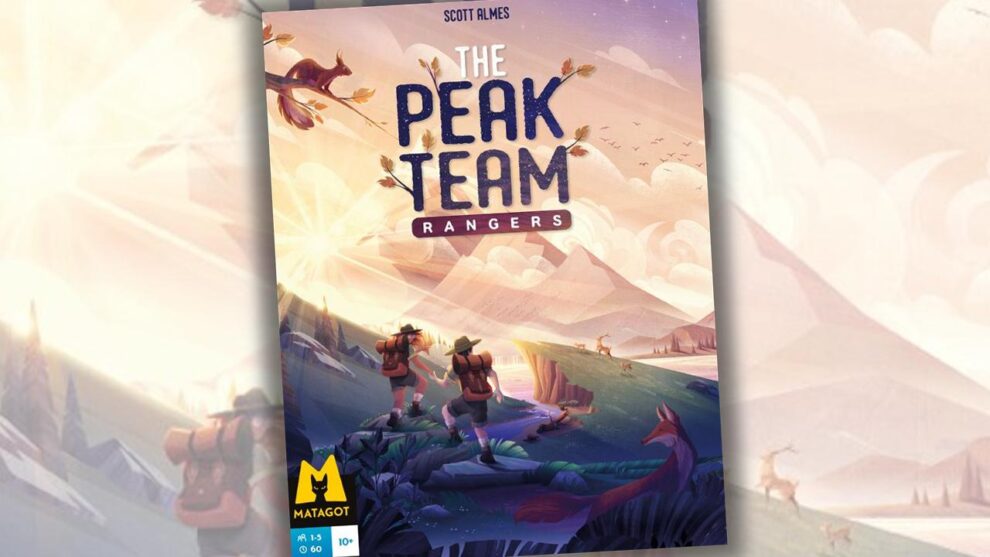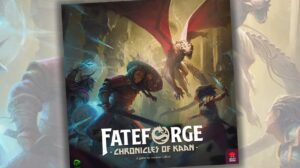Disclosure: Meeple Mountain received a free copy of this product in exchange for an honest, unbiased review. This review is not intended to be an endorsement.
I think that I have finally found my favorite Matagot game.
The French publishing conglomerate distributes both in-house products as well as games licensed from other publishers. Their in-house stuff has mostly been average. The effort is always there, but the final product never seems to blow me away. With this year’s release of The Peak Team, designer Scott Almes has delivered something that is extremely flexible in terms of its play style and works nicely as a satisfying, cooperative gaming challenge that plays in about an hour.
My only point of contention is the game’s title. The box very clearly says that the game is called The Peak Team Rangers, but in both its marketing materials and on BoardGameGeek, this game is called The Peak Team. It’s sort of weird, if I’m being honest…why is the word “Rangers” even around?
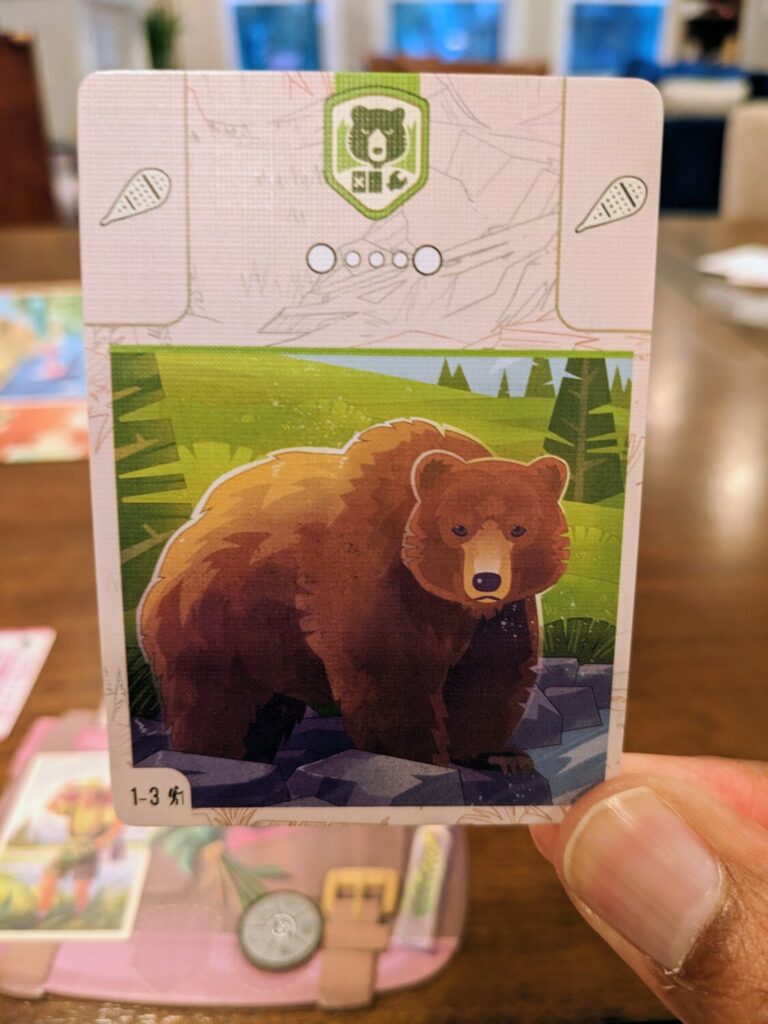
Campaign Game
The Peak Team is a hand management game for 1-5 players. Players take on the roles of park rangers who must record data on a small pool of animals as well as deal with a series of issues, known in-game as Missions, before the park closes after six rounds. Each round is broken into two phases. First, there’s a “supply drop”, where players get four new Supply Cards from the deck and add those to any leftover cards from the previous round. During the supply drop, players take their entire hand of cards and split them as evenly as possible to give to their immediate neighbor on the left and right.
During this phase, it is forbidden to communicate with other players, but my findings have shown that no matter what I tell players about silly things like rules, someone is going to spend time campaigning for certain Supply Cards because of what we will come to during phase two, the action phase. After cards are divided up, each player will now have a new hand of cards they can use to take actions.
On their action phase turn, a player can do any number of actions as long as they have the means to do so; I liked the loose nature of this. The game’s map features a number of location spaces numbered 1-6 and A-Z. Each player has a ranger token on either a location space or on one of a number of brown Ranger Station spaces. Using a mission mechanic where each player has destinations they need to visit to accomplish missions, each turn typically requires a player to get from one space to another to get closer to one of their mission destinations.
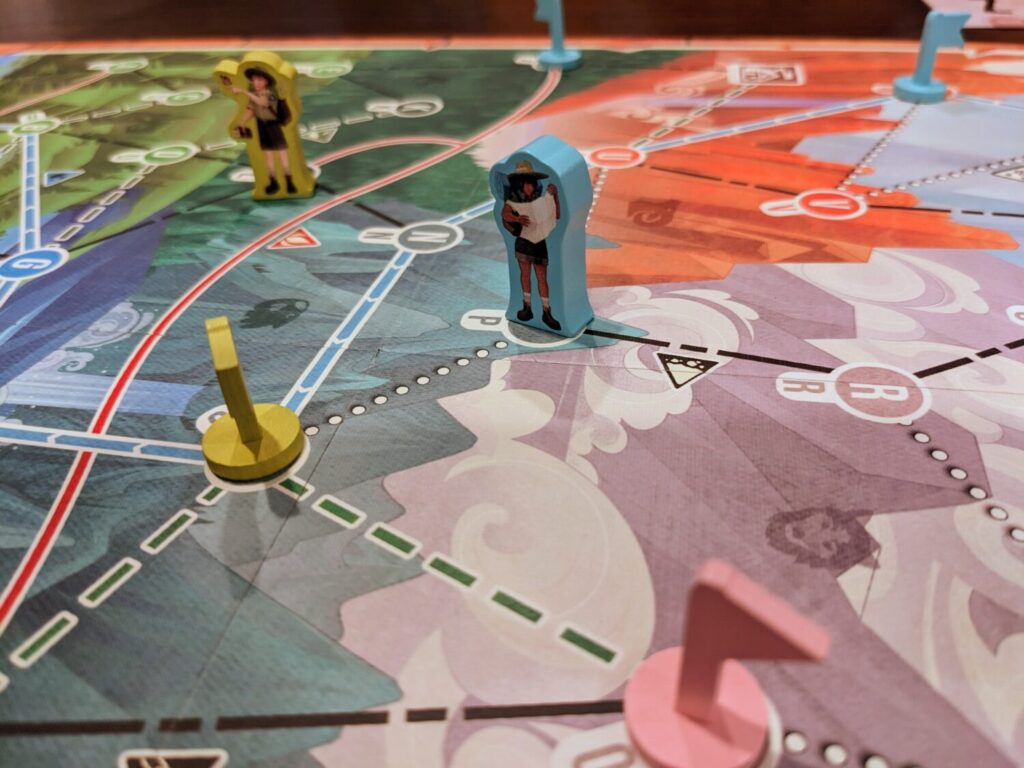
The trick in The Peak Team is that each location is connected by at least one and as many as three different equipment icons…and to move from one location to another requires a matching icon on a Supply Card played from hand. That also means that players might be stuck in a location if they don’t have, say, a snowshoe card to leave a mountain location, or a ranger jeep icon to move along a road route.
That forces players to understand the movement mechanics of their teammates immediately. Each Supply Card is multi-use; there are movement icons on each card, with 1-3 icons of a single type, to move that many steps along a matching series of locations. Each card also has one of the animal types printed in the middle; if a player is standing next to an animal token matching the color of the animal, they can burn a card to “record” that animal and collect that token to the team’s collection for end-game consideration.
(My kids and I are still hoping that “record” really means take a picture, or grab a sample, or something not nefarious. But in one of my plays, someone joked that “record” might mean rubbing out a moose or something. I’ll just say it’s not that clear in the manual.)
The game’s scoring is simple—the entire team wins if they record all animals and complete all missions laid out during setup before the end of the sixth round. If one of those two conditions are not met, everyone loses!
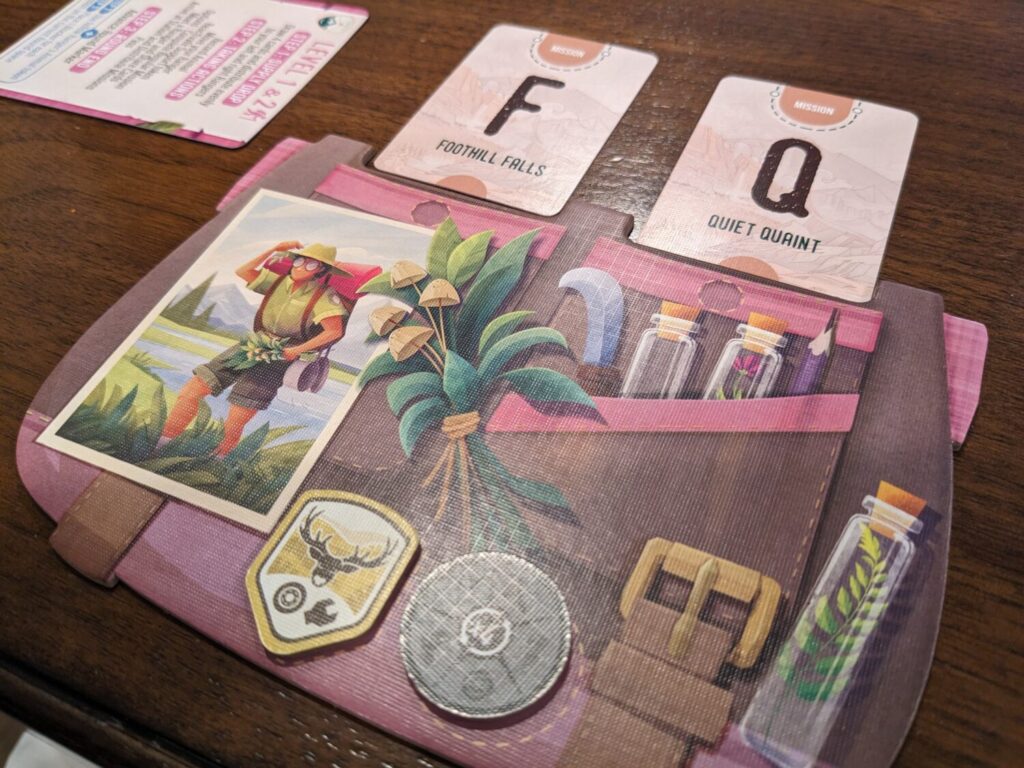
Climb the Mountain
And those are just the rules to the Level 1 Hike base game rules of The Peak Team. There are actually five sets of rules, with four that slowly build off the Level 1 rules, offering a nice array of flexibility to scale the experience up to the difficulty level desired by players. (Even for a family game, I would recommend starting at Level 2, which introduces penalties for not completing enough missions each round and offers one-time bonuses with each collected animal token.)
The Peak Team’s puzzle was always interesting and while the game doesn’t have a massive arc—each round plays out roughly the same way, as players work to squeeze all missions into the completed pile—sussing out which cards to give to which players without having them barter for the most useful cards was usually fun. And pushing everyone to balance when to burn a card for its “record animal” function versus its movement ability ended up being a meaningful choice; a third use of the game’s icons comes when using a player’s Support Token, which can give another player a one-time wild icon to use for any normal movement function.
I also enjoyed the way new missions are doled out to players—someone has to move to a Ranger Station, then flip new missions from that round’s supply to unique players, one by one. Sometimes, the luck of the draw worked out well and a player was given a mission that was very close or directly at their current location, while in other cases we were hosed by bad luck. Trying to keep players in a certain region of the board to keep taking out missions in this way is a possible strategy to stay in front of the 8-ball, and it allows players to focus on giving certain kinds of Supply Cards to the right player.
Levels 3, 4 and 5 really amp up the difficulty of a game that is already a tricky one to win consistently. And the way these new rules change The Peak Team, I would recommend adding all of them instead of cherry picking any single one. For example, the Level 5 rules add event cards that change the “weather” by adding different rules/restrictions for a single round each. Level 4 turns the game into a high-score challenge, while Level 3 adds in player powers for the Eurogamer in us all.
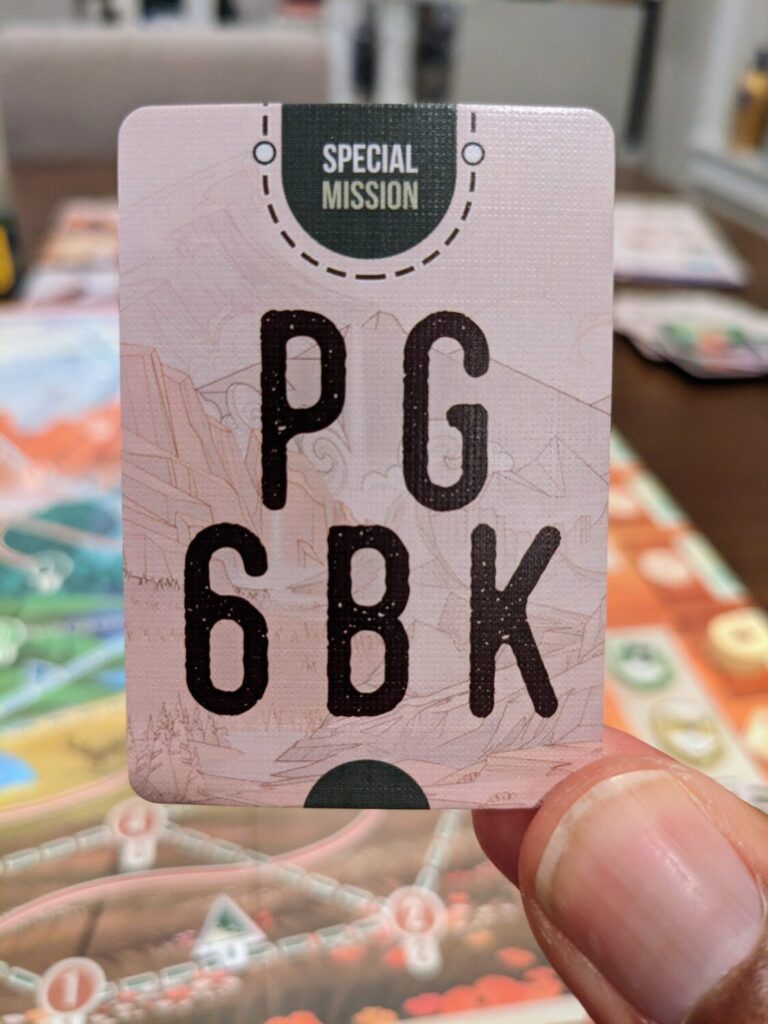
A Delightfully Peaceful Stroll
The Peak Team is solid. It is a very easy-to-teach puzzle that I played with gamers, my kids, and solo. The solo game mechanic is very easy to administer, using a card tiling market that a single player uses to move multiple rangers around the map. Of the game modes, I thought solo offered the easiest way to win because I didn’t need to worry about whether a neighbor would hand me the right cards…the ones in front of me allowed for the easiest way to navigate a perfect stroll.
I gauge many of my games by the desire of my kids to play anything a second time…my kids were one-and-done after their first play of The Peak Team, and they haven’t asked to play it again. After my third play, I wasn’t that interested in doing, say, Level 4 to see how many extra missions we could beat using the Success Tokens high score mechanic.
The Peak Team’s main negative is that losing sometimes feels predetermined. During setup, each player gets one random mission from the deck. If players don’t get the right mix of cards to tackle missions early, it is really hard to catch up, especially with the way new missions are distributed during play. If the game is set to Level 2 or higher, penalties kick in if the missions available in a round have to push into the next round, including blocked routes that can only be moved through using animal tokens.
These conditions are all tied to the card draw, so I am surprised to say that while I am better at The Peak Team than I was before my first play, there’s no guarantee that I can help navigate a team to another win even on the Level 1 difficulty if the cards don’t line up. In some ways, I like that, as a fan of some randomness in my games. But some people may struggle with the lack of control.
Otherwise, I highly recommend The Peak Team, and Matagot did a nice job with this production. It’s a good-looking product on the table and the two separate rulebooks (Levels 1 and 2 in one manual, with 3, 4, and 5 in the other) made it easy to find what I needed when there were any questions. Almes, the game’s designer, has certainly been around the block, with games like the Tiny Epic series as well as one of my all-time favorite two-player only games, Beer & Bread. The Peak Team does great work with a medium-sized time commitment.


